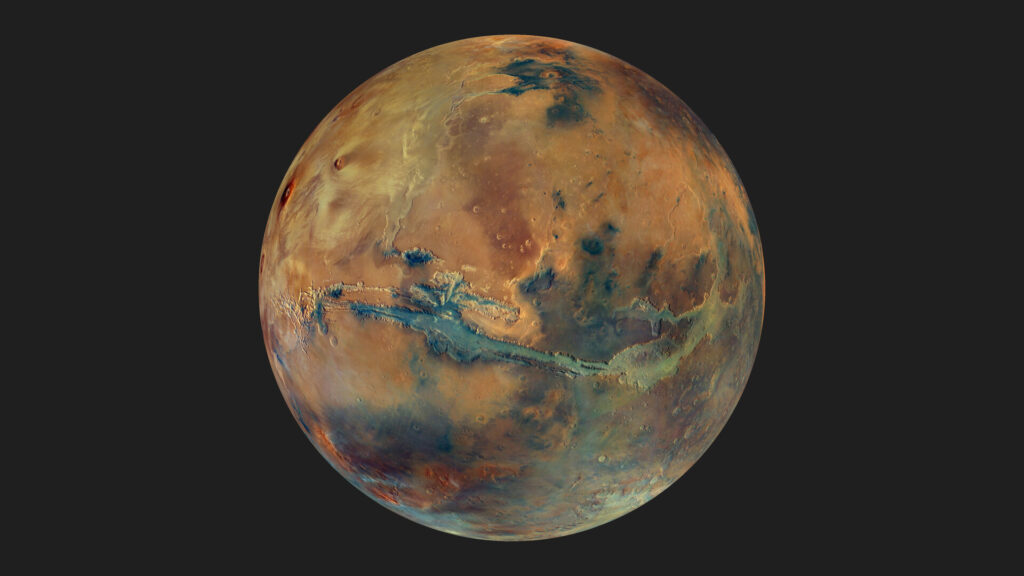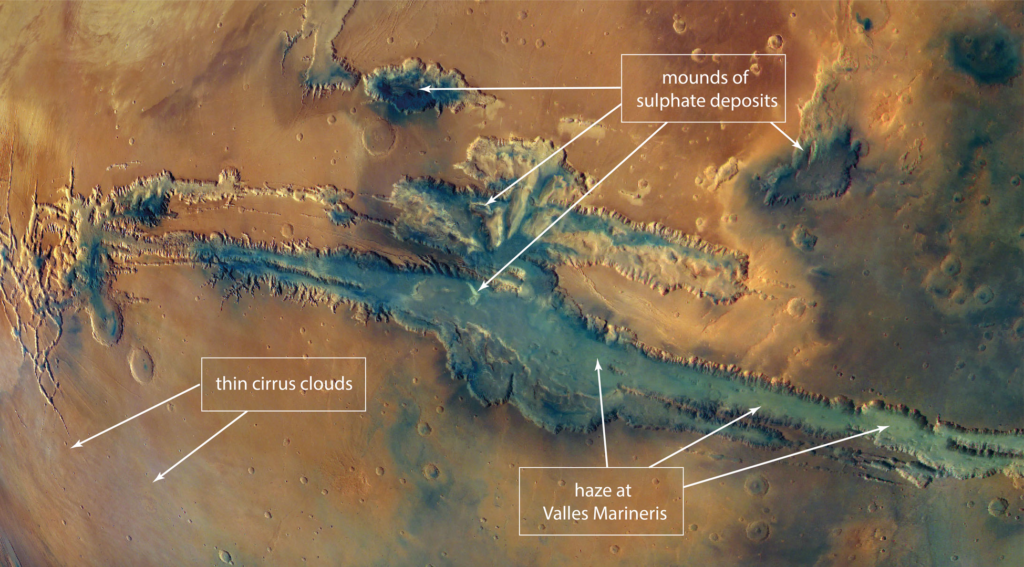The European Space Agency has published a new global portrait of Mars. It was compiled from images taken by the HRSC camera installed on board the Mars Express spacecraft.
Giant structures of Mars
As a rule, the HRSC camera takes pictures when the Mars Express passes the pericenter of its orbit from a distance of 300 km from Mars. The photographs taken from this height cover areas of the surface 50 km wide. However, this is too little for a global portrait of the planet. Therefore, it was obtained in a different way. Mission specialists stitched together 90 images taken from altitudes from 4 to 10 thousand km.

The center of the image is dominated by the Valles Marineris — the largest canyon system in the Solar System, against which the famous Grand Canyon would seem like a real dwarf. Their length is 4,500 km (a quarter of the circumference of the planet), width is up to 600 km, and the maximum depth is 11 km. Thus, Everest could easily fit inside them.
In the upper left part of the image, you can also see several super volcanoes of the Tharsis. Since there is no plate tectonics on Mars, the foci of volcanic activity do not shift, which, coupled with lower gravity, has allowed the volcano to grow to a huge size. The largest of the Martian super volcanoes Olympus rises 26 km above the surrounding surface.
True colors of Mars
You can pay attention to the fact that the colors of the image are somewhat different from traditional images of Mars. They are “enhanced”. This was done in order to better emphasize the differences in the mineral composition of different parts of the planet’s surface.

Determining the true colors of Mars is not an easy task. This is hindered by the dust scattered in its atmosphere, rich in iron oxide. To color the portrait, experts created a model based on previous images of Mars Express.
The dark blue areas correspond to the material of volcanic origin — basalt sands, which form far-reaching layers throughout Mars. They accumulate under the influence of wind, creating impressive sand dunes and dune fields inside impact craters.
The material that is once exposed to water, on the contrary, looks lighter. The two most common minerals of this type (clay and sulfates) look especially bright in such composite images. Their presence indicates that liquid water has existed on Mars for a long time. You can pay attention to the fact that in the area of the Valles Marineris, sulfates are covered with a thin layer of dark sand. Unlike clay deposits, sulfate minerals indicate more acidic environmental conditions, less favorable for life.
The publication was timed to coincide with the 20th anniversary of the Mars Express mission, which was launched in 2003. Despite the fact that the nominal service life of the spacecraft was only two years, it is still in an areocentric orbit and is studying the Red Planet. ESA expects that Mars Express will be able to continue working at least until the end of 2026.
According to https://www.esa.int
Follow us on Twitter to get the most interesting space news in time
https://twitter.com/ust_magazine
